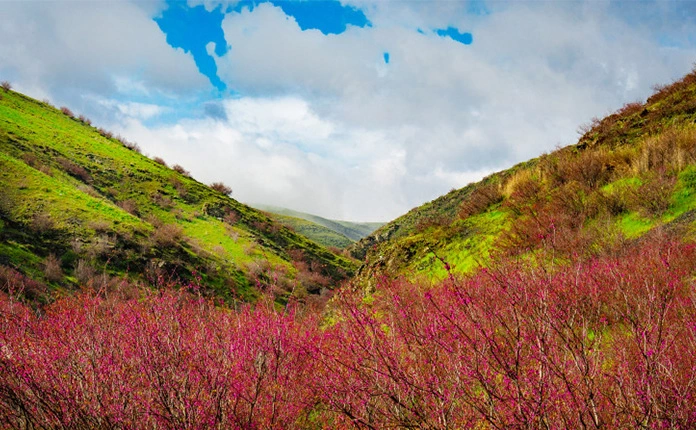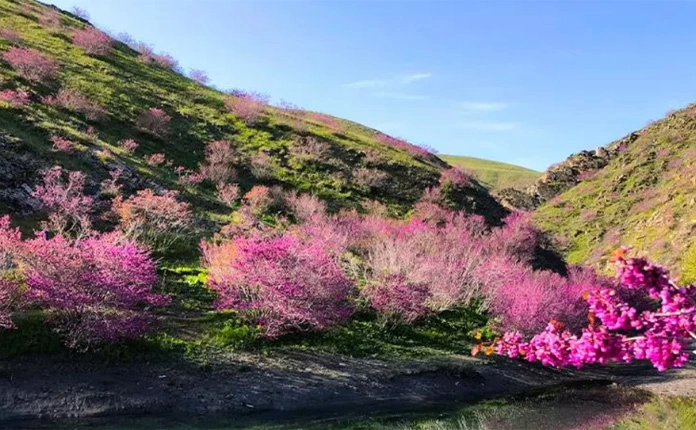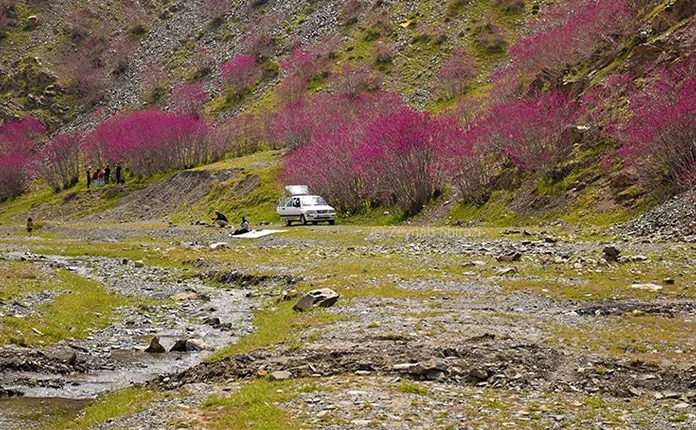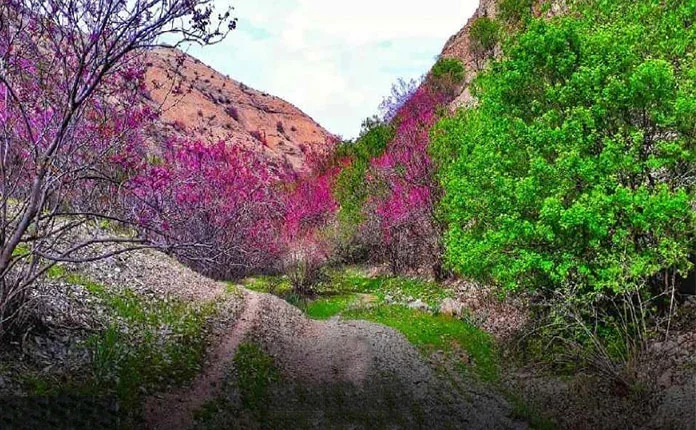The Arghawan Valley is a purple paradise near Mashhad. This valley is filled with purple bushes called arghawan, whose height sometimes reaches ten meters.
Visiting Mashhad’s Arghawan Valley is one of the best things to do in Mashhad. This valley is located in the tourist area of Torghabeh. The beautiful valley boasts a pleasant climate, remaining mild even on hot summer days. Arghawan Valley is situated in the high areas among dense mountains, making it a suitable destination for tourists interested in nature tourism and mountaineering in the northeast of Iran.
Arghawan Valley is a short distance from Mashhad city, and during the trip to this city, it is possible to visit this valley in one day. Stay with us in this post of OverIran magazine to get to know Arghawan Valley and the best time to visit this area.
Where exactly is the Arghawan Valley?

Address of Arghawan Valley: 30 kilometers west of Mashhad, 7 kilometers from the Torghabeh road to Kalate Ahan village (view on the google map).
Arghawan Valley is one of the most beautiful natural areas of Iran near the Mashhad, whose name appears in the list of Iran’s natural heritage. This valley is located in Binalud city and on the access road to Kalate Ahan village. As the name of this valley suggests, this beautiful area is covered with purple bushes. The spectacular purple landscape in this valley attracts many tourists to the purple valley in the spring season.
Arghawan Valley is a short distance from the tourist area of Torghabeh and is considered one of its functions. The access route to Arghawan Valley passes through the “Taraghdar” road. This valley is located near the holiday village “Kalate Ahan” and on the side road of this village, and it can be accessed from the asphalt road before the entrance of this village. This region is one of the mountainous parts in the west of Mashhad and has a more pleasant climate than the surrounding cities.
About the Arghawan Valley

Arghawan Valley is a part of Iran’s natural heritage in northeastern Iran. The entire valley is covered with purple bushes. This plant is one of the most famous Eastern Mediterranean species in the world and grows as a shrub. Over the past years, this valley has been completely cleaned up thanks to the efforts of environmental activist groups. Garbage bins have also been installed in different parts of the foothills on the way to this valley.
Arghawan Valley has a pleasant summer climate. In this area, there are springs full of water, some of which are permanent and some are seasonal. The purple bushes in this valley are highly flexible, and the locals of the surrounding areas make baskets with the wood of these trees after the pruning season. Handicrafts made with purple wood are called “arghawan weaving.” Handicraft shops around this valley offer a variety of wicker baskets with purple wood to tourists.
Arghawan valley turns purple when its shrubs bloom in spring. Walking on the beautiful path of this valley is one of the best activities in Arghawan Valley and will leave you with unforgettable memories of one of the best nature tourism routes in Iran. The mountains around this valley also have high tourism capacities for those who are interested in mountaineering.
The surroundings of this area are covered by green and tree-filled gardens, which attract the attention of tourists on the way to visit Arghawan Valley.
When is the best time to visit Arghawan Valley?

The nature of Mashhad is spectacular in the hot seasons of the year. Mashhad generally has pleasant weather, especially Arghawan Valley and Torghabeh, which are located in Razavi Khorasan province and remain cool even on summer days.
The Arghawan valley is only purple for one month of the year and becomes similar to other plains and deserts on different days of the year. So the best time to visit this valley is May.
Purple flowers bloom from late April and remain until early June, but close after that. In the flowerless seasons, the bushes look like thistles, and only in May do they transform into the popular purples that are the darlings of spring.
